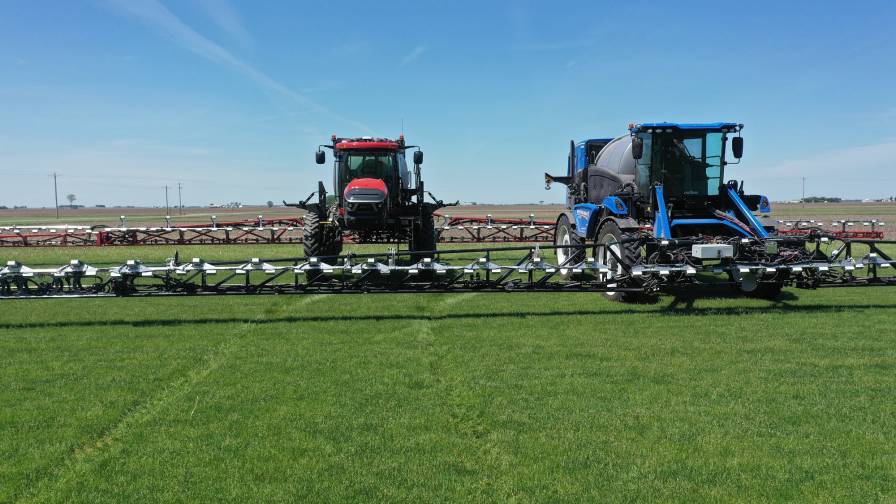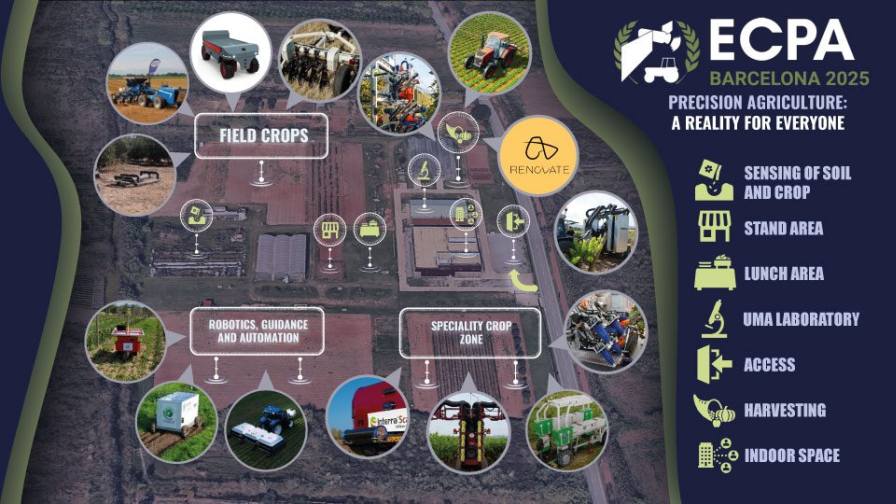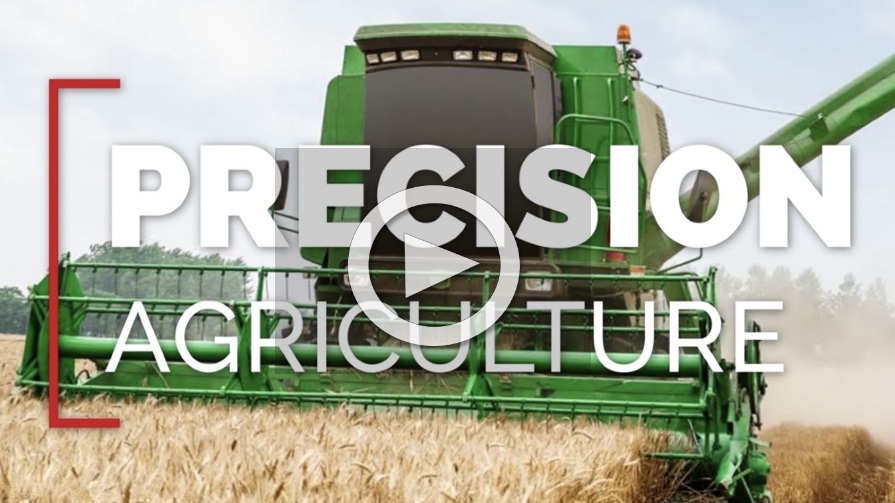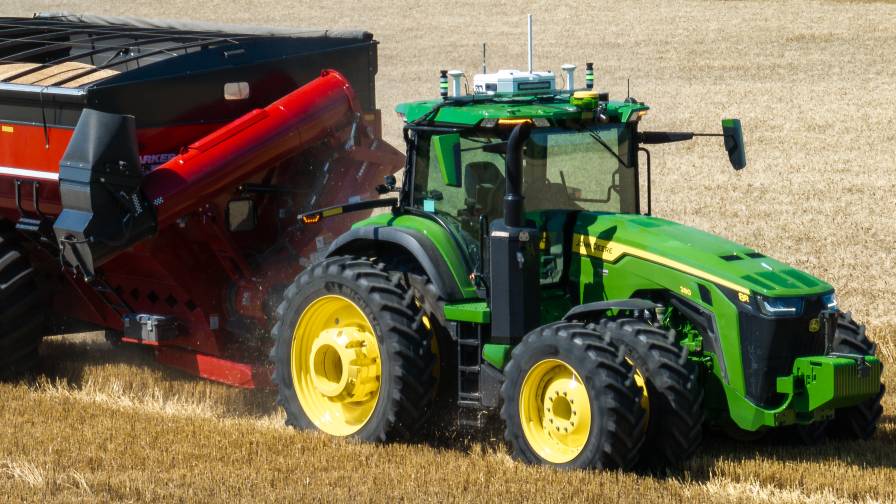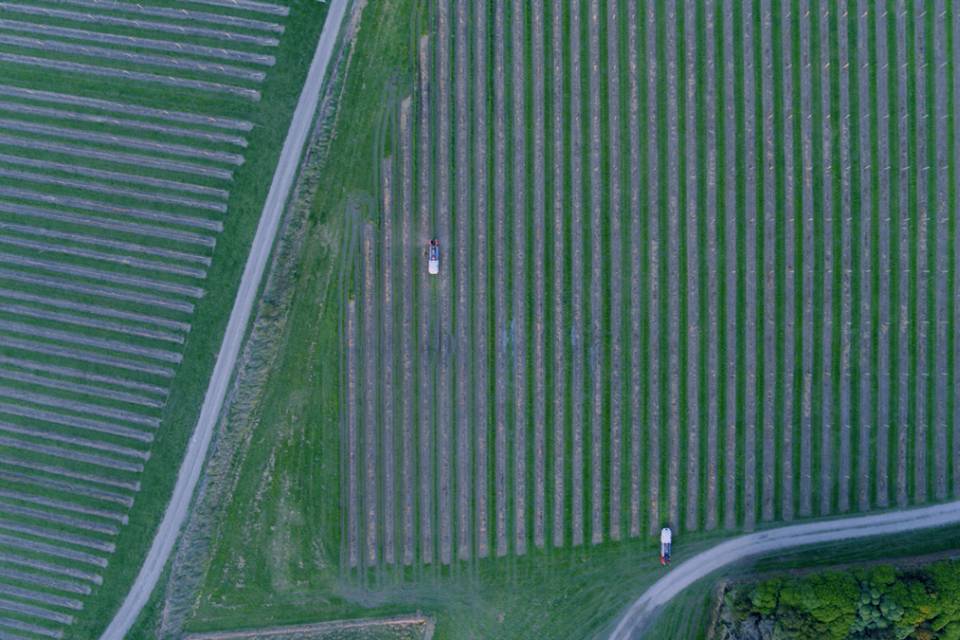Digital Modeling: The Future of Precise Forecasting to Increase Crop Yield While Reducing Risk
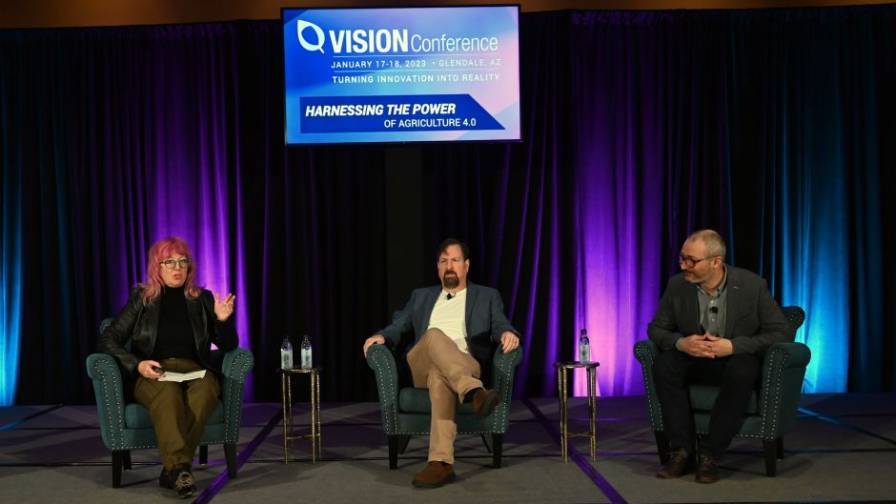
During the VSION Conference session “Digital Modeling for Precise and Accurate Forecasting,” panelists said the industry doesn’t have “the luxury of waiting through an entire growing season anymore. We need to move faster.” From left: Kathleen Glass, AquaSpy; Rob Tiffany, Sustainable Logix; and Elia Scudiero, University of California-Riverside.

Editor’s note: Multiple platforms, digital twins, and other data modeling can help growers with plant health and yield using information for weather, climate, water, crop behavior, and soil. This topic was discussed at the recent VISION Conference during the session “Digital Modeling for Precise and Accurate Forecasting”. In this article, Jan Johnson of Millennium Research shares insight from the session’s panelists.
Agriculture has always been about modeling and forecasting, if only in the grower’s mind. More fertilizer should equal more yield, until it doesn’t, and then let’s change my decision on inputs. Herbicides kill certain weeds, until they don’t, and then we switch herbicides.
But in a increasingly fast-paced and digital agriculture, the way to continue to improve yields and feed the world’s population is by taking years of information, data points and outcomes and creating digital models to predict what will happen before it does, and prescribing preventative action to maintain yields and quality rather than corrective action after the damage has started.
“It is the notion of modeling a farm. The crops, the soil, the water of the fertilizer, the weather, all those things. Farmers are already doing that today to a varying degree. One of the main drivers of agriculture is the soil. We have soil maps for the entire United States. They’re not very high resolution, but we do use them as a model of how we expect a crop to perform on a certain piece of ground,” notes Rob Tiffany, Founder and CEO of Sustainable Logix, a firm dedicated to reducing waste through continual monitoring, tracking, reporting and automation.
MORE BY JAN JOHNSON
Using the Cloud to Connect Farmers to Consumers Serves Opportunities to Both, With a Side of Efficiency
VISION Conference: Tech Industry Amplifies Focus on Farmer Needs, Outcomes
The future gains in agricultural productivity will come from the ability to model from accurate data what is happening at the micro or macro level of the farm and then make decisions to improve quality and yield. “We want to be able to make a change before that crop is stressed, but just before it happens,” he says. “Not after, because by then we’ve lost yield or quality and potentially damaged the tree.”
Many experts say the best use of the metaverse for agriculture is creating a digital twin of each farm or field, and then using that twin to incorporate weather, moisture or inputs to determine the best possible outcome for that field. The basis for the digital twin comes from actual data collected along a digital thread — a time-series data collected throughout the lifecycle of your plant, whether it’s a soybean plant or an apple tree. Every time data is collected from the physical world, it also goes into the digital twin. However, that’s a ways away, say leading experts. The current work, which is laying the foundation for digital twins, is large-scale modeling using sensors and crop data to predict outcomes, and if possible, interventions that will improve outcomes while reducing costs and risks.
Dr. Elia Scudiero, Research Agronomist at University of California Riverside, is working to develop the ability to remotely sense the effects of the environment on plants and then automate mitigating treatments. He has received the 2020 Young Scholar Award from the Soil & Water Management & Conservation Division of the Soil Science Society of America for his research work.
As water becomes increasingly valuable and in short supply, the ability to provide the right amount of water at the right time for the plant to thrive is a focus of Scudiero. Of particular interest is measuring soil salinity and compensating irrigation levels, because if there is too much salt in the soil, the crop doesn’t do well, but up until that level, performance stays the same. Over-irrigating pushes the salt away, as does rainfall, but irrigation is costly, so he wants to provide a model for growers to know how much and when they need to address the soil salinity.
“This is actually a newer concern,” Scudiero says. “We know that some of the fruits are, more risk sensitive, so you want irrigate a little bit more than the crop needs so that you’re pushing away the salt. And these type of experiments were usually done years ago in the greenhouse and were very little representative for real life conditions in the field. But nowadays we can do it in the field, very large trials where we actually grow it and we observe growing it and then we’ll collect the data in the background for our model.”
In the future, as the model is perfected, irrigation might be automated based on plant needs and soil salinity which have been determined from massive databases generated by large scale observation.
AquaSpy provides smart soil moisture probes connected to the IoT. This enables growers to track water and nutrients at several levels underground and this data is transmitted to the cloud where growers can access it in real time. Used in conjunction with a technology like FarmQA, farmers can be proactive in managing soil moisture, reducing irrigation fertilizer costs.
In addition to benefitting individual growers, technology like AquaSpy can provide additional set of water moisture data points to SCAN (Soil Climate Analysis Network) and USCRN. This, in turn, should accelerate the development of accurate, predictive models. Working together benefits the entire industry.
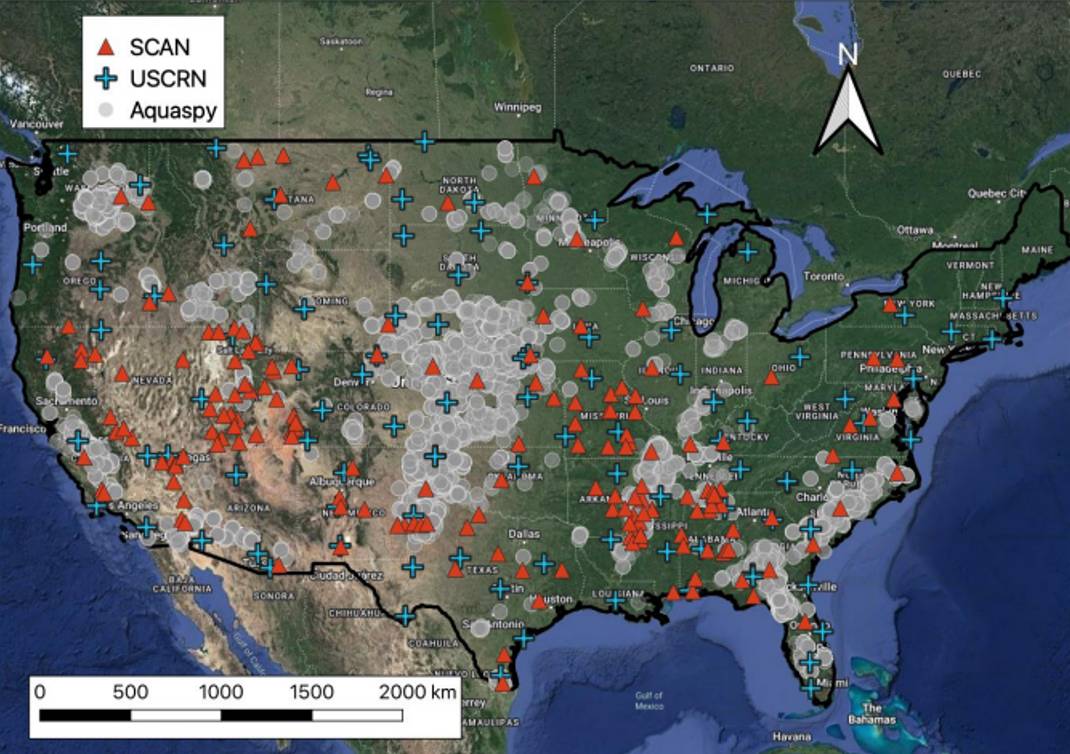
Location of soil moisture sampling by entity. Firms like Aquaspy provide more data that will help increase the accuracy of models based on soil moisture.
So, while digital twins are not here yet, progress on using large amounts of data coupled with analysis by artificial intelligence is moving forward as fast as the industry can take it. Existing digital models are most often directed at preventing diseases in high-value specialty crops. BLIGHTCAST, for example, was developed to predict late blight on tomatoes and potatoes based on rainfall, relative humidity and temperature data. It recommends when to spray to growers. It is now available on several platforms.
FAST (Forecasting Alternaria solani on Tomatoes) uses hourly measurements of leaf wetness and temperature to forecast early blight on tomatoes. It recommends when to spray, and has been so effective, it has been modified for other crops.
Kathleen Glass, Vice President of Marketing for AquaSpy, says “now we’re getting to model the pests and the microbe activity under the soil and things like that. So, so this is sort of the evolution that we see, where the models started out was just maybe two or three things. Now we have the satellites and more granularity and, you know, interesting different wavelength stuff and, and the ability to gather more data and, and then you start to be able to take many factors into account when making predictions in a model.”
Tiffany and Glass agree that farmers are understandably reluctant to believe in the future of digital modeling, because of the many unfulfilled promises made over the past few years by Silicon Valley types.
“I talk with growers,” says Tiffany, “and they all say ‘Five years ago, all those city slickers, all those kids from Silicon Valley came out here to show us all this IOT and whatever. And it turned out to be an expensive science experiment. They didn’t know what they were doing. They were just throwing things at the wall, seeing what would stick. And they didn’t really have their act together.’
“You know, the technology has got to get simpler, easy. It’s got to be low cost. And we’re working on it. Hopefully we’ll get there, but we have to measure first. Because you can’t fix what you can’t measure.”





